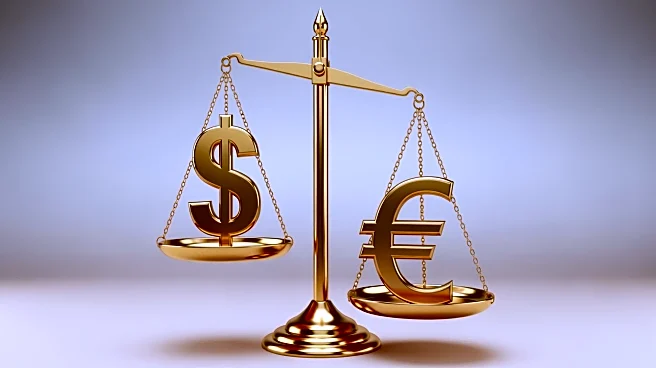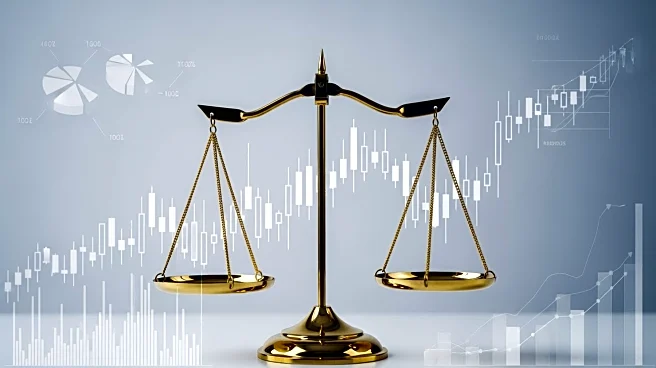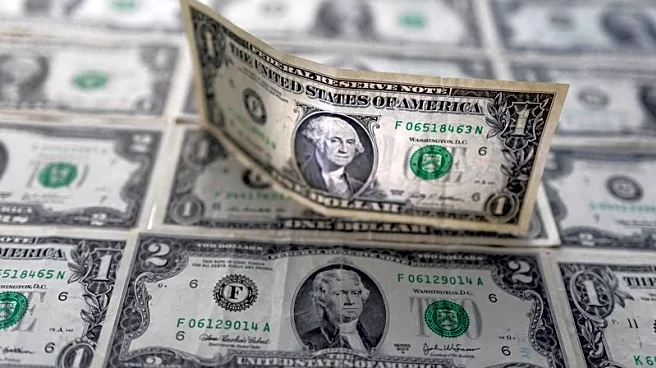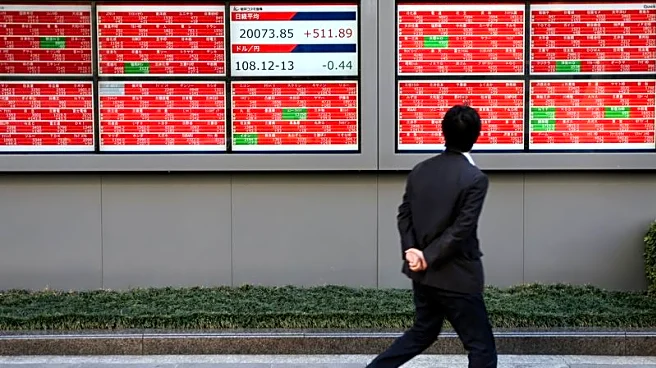What's Happening?
The U.S. dollar has reached a three-month high as traders adjust their expectations for future interest rate cuts due to divisions within the Federal Reserve. The dollar's strength is attributed to a risk-off
sentiment among investors, who are seeking safe-haven assets amid global economic uncertainties. The Federal Reserve's recent meeting resulted in a rate cut, but Chair Jerome Powell indicated that another cut in December is not guaranteed. This uncertainty has led to a decrease in the probability of a December rate cut, now priced at 65% compared to 94% a week earlier. The dollar's rise is also supported by a decline in the euro and the British pound, as well as a cautious stance from the Reserve Bank of Australia, which left its cash rate unchanged.
Why It's Important?
The dollar's appreciation reflects broader market concerns about global economic stability and the Federal Reserve's monetary policy direction. A stronger dollar can impact U.S. exports by making them more expensive for foreign buyers, potentially affecting trade balances. Additionally, the shift in interest rate expectations could influence investment strategies and borrowing costs for businesses and consumers. The Federal Reserve's indecision highlights the challenges of navigating economic policy amid mixed economic signals and geopolitical tensions. The outcome of these monetary policy decisions will have significant implications for financial markets and the broader U.S. economy.
What's Next?
Market participants will closely monitor upcoming economic data and Federal Reserve communications for further clues on the likelihood of future rate cuts. The ongoing U.S. government shutdown, which has suspended the release of some economic data, adds another layer of uncertainty. Investors will also watch for any interventions by Japanese authorities to support the yen, as well as developments in the UK, where economic challenges could influence the Bank of England's policy decisions. These factors will play a crucial role in shaping currency markets and investor sentiment in the coming months.
Beyond the Headlines
The current situation underscores the complex interplay between monetary policy, currency markets, and global economic conditions. The Federal Reserve's cautious approach reflects broader concerns about inflation, employment, and economic growth. The potential for currency interventions by governments, such as Japan, highlights the geopolitical dimensions of monetary policy. As central banks navigate these challenges, their decisions will have lasting impacts on global financial stability and economic recovery efforts.












